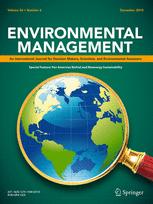Ver ítem
- xmlui.general.dspace_homeCentros e Institutos de InvestigaciónCIA. Centro de Investigaciones de AgroindustriaInstituto de Ingenieria RuralArtículos Científicosxmlui.ArtifactBrowser.ItemViewer.trail
- Inicio
- Centros e Institutos de Investigación
- CIA. Centro de Investigaciones de Agroindustria
- Instituto de Ingenieria Rural
- Artículos Científicos
- Ver ítem
Opportunities and challenges in the design and analysis of biomass supply chains
Resumen
The biomass supply chain is one of the most critical elements of large-scale bioenergy production and in many cases a key barrier for procuring initial funding for new developments on specific energy crops. Most productions rely on complex transforming chains linked to feed and food markets. The term ‘supply chain’ covers various aspects from cultivation and harvesting of the biomass, to treatment, transportation, and storage. After energy conversion, the
[ver mas...]
The biomass supply chain is one of the most critical elements of large-scale bioenergy production and in many cases a key barrier for procuring initial funding for new developments on specific energy crops. Most productions rely on complex transforming chains linked to feed and food markets. The term ‘supply chain’ covers various aspects from cultivation and harvesting of the biomass, to treatment, transportation, and storage. After energy conversion, the product must be delivered to final consumption, whether it is in the form of electricity, heat, or more tangible products, such as pellets and biofuels. Effective supply chains are of utmost importance for bioenergy production, as biomass tends to possess challenging seasonal production cycles and low mass, energy and bulk densities. Additionally, the demand for final products is often also dispersed, further complicating the supply chain. The goal of this paper is to introduce key components of biomass supply chains, examples of related modeling applications, and if/how they address aspects related to environmental metrics and management. The paper will introduce a concept of integrated supply systems for sustainable biomass trade and the factors influencing the bioenergy supply chain landscape, including models that can be used to investigate the factors. The paper will also cover various aspects of transportation logistics, ranging from alternative modal and multi-modal alternatives to introduction of support tools for transportation analysis. Finally gaps and challenges in supply chain research are identified and used to outline research recommendations for the future direction in this area of study.
[Cerrar]

Autor
Lautala, Pasi T.;
Hilliard, Michael R.;
Webb, Erin;
Busch, Ingrid;
Hess, J. Richard;
Roni, Mohammad S.;
Hilbert, Jorge Antonio;
Handler, Robert M.;
Bittencourt, Roger;
Valente, Amir;
Laitinen, Tuuli;
Fuente
Environmental Management 56 (6) :1397–1415. (2015)
Fecha
2015-12
ISSN
0364-152X
Formato
pdf
Tipo de documento
artículo
Palabras Claves
Derechos de acceso
Abierto
 Excepto donde se diga explicitamente, este item se publica bajo la siguiente descripción: Creative Commons Attribution-NonCommercial-ShareAlike 2.5 Unported (CC BY-NC-SA 2.5)
Excepto donde se diga explicitamente, este item se publica bajo la siguiente descripción: Creative Commons Attribution-NonCommercial-ShareAlike 2.5 Unported (CC BY-NC-SA 2.5)


